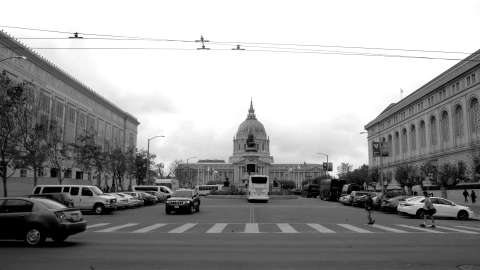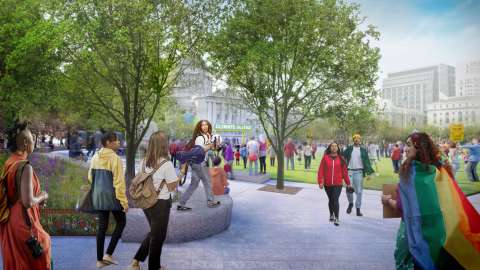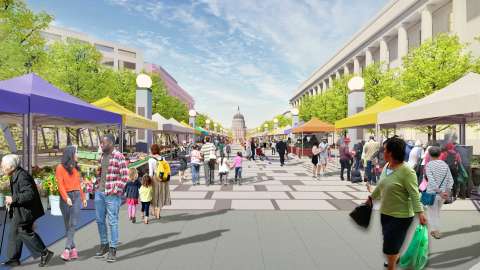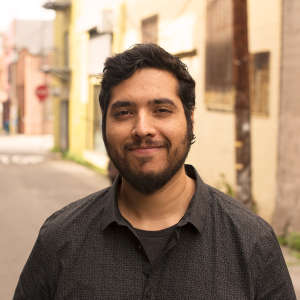


Designing for Inclusivity, Democracy, and Public Life
Creating an inclusive, elegant oasis that fulfills the ambitions of the 1912 Beaux-Arts plan, the project vision weaves together equity, beauty, and ecology within Civic Center’s ceremonial and neighborhood spaces. Through a comprehensive stakeholder engagement process with under-represented and underserved communities and analysis of historic assets, Civic Center Public Realm Plan presents a space where all San Franciscans can gather to play, commune, celebrate, protest, and mourn.
Urban Forest as Ecological Catalyst and Unifying Spatial Framework: The Civic Center Public Space Design prioritizes the urban forest in San Francisco’s historic district to enhance the connection to nature, ecological value, beauty, and shelter. 400 new trees will unify the 16-acre open space including a double allée extending from Market Street to welcome people to Civic Center Plaza.


An Inviting Place for Public Life: The plan supports daily public life by actively engaging the district’s institutions and connecting thousands of current and future neighbors, employees, and residents from diverse cultures and backgrounds citywide. Civic Center Public Realm Plan creates new pavilions and storefronts to invigorate space, adding necessary restrooms, abundant seating, and drinking fountains to support basic human needs, and enhancing the pedestrian and transit experience.



The Public Realm Plan targets zero-water waste through district water reuse and green infrastructure. Today, 8.2 million gallons of foundation water is pumped to the combined sewer system each year, while annual potable water demand exceeds 10 million gallons. A new district-scale water reuse system will intercept reclaimed water from the City’s sewer system to provide treated water for irrigation, fountains, and an emergency drinking supply in the event of earthquakes or other disasters. Proposed infiltration and detention of rainwater in Fulton Mall and UN Plaza fountain will further lessen the demand on the District’s sewer system and reduce flows to flood-prone nearby neighborhoods.

The Civic Center Public Space Design remakes a mid-century landscape that has been designed for exclusion into a civic space of inclusion – a welcoming place that reflects the cultural, social, and economic diversity of the neighborhoods it serves, and embodies the democratic values of the city it represents.

















